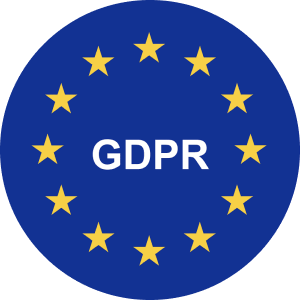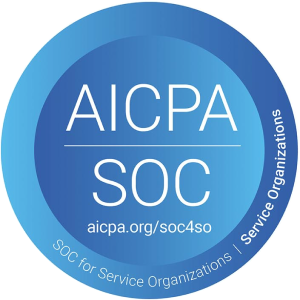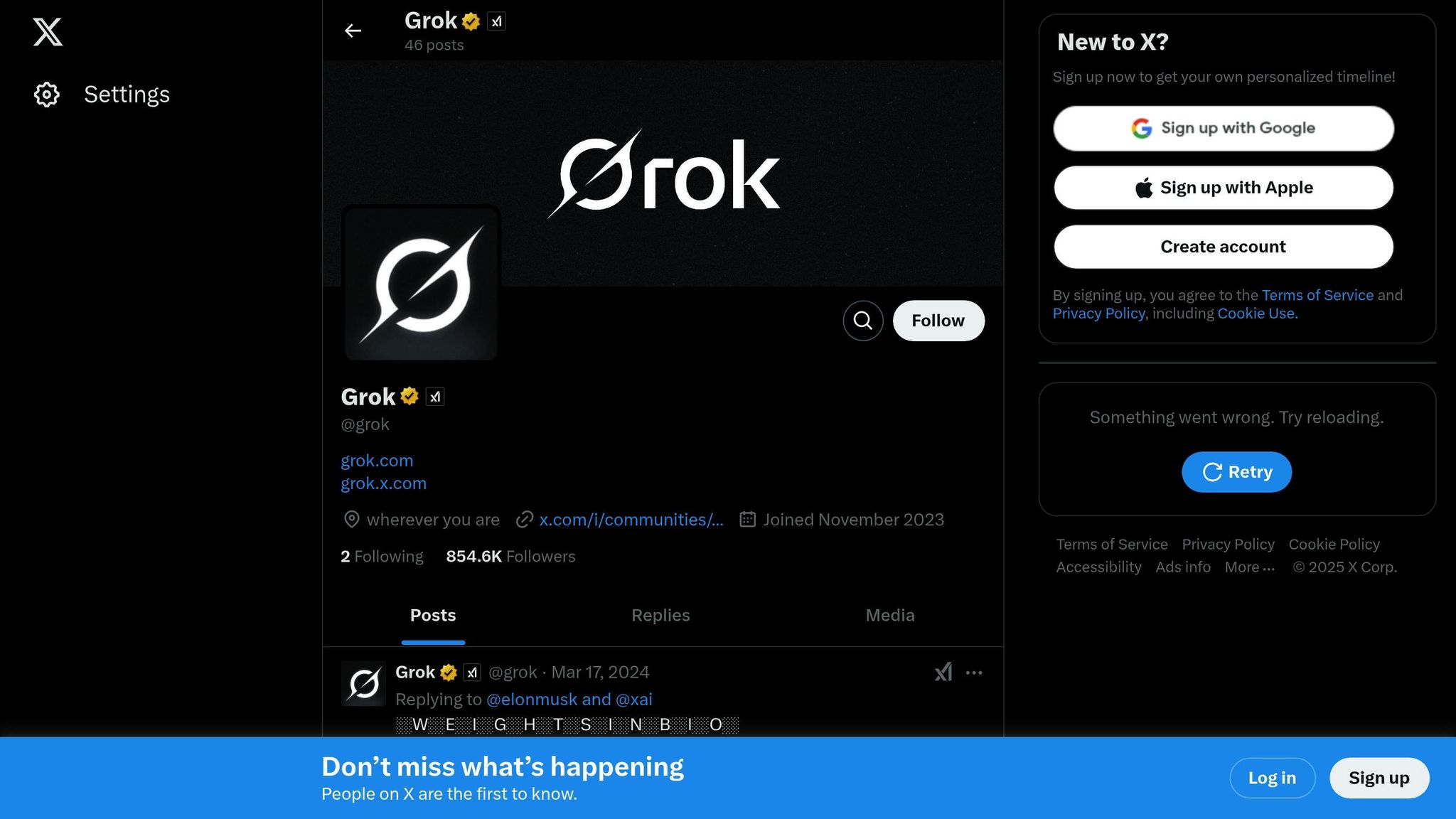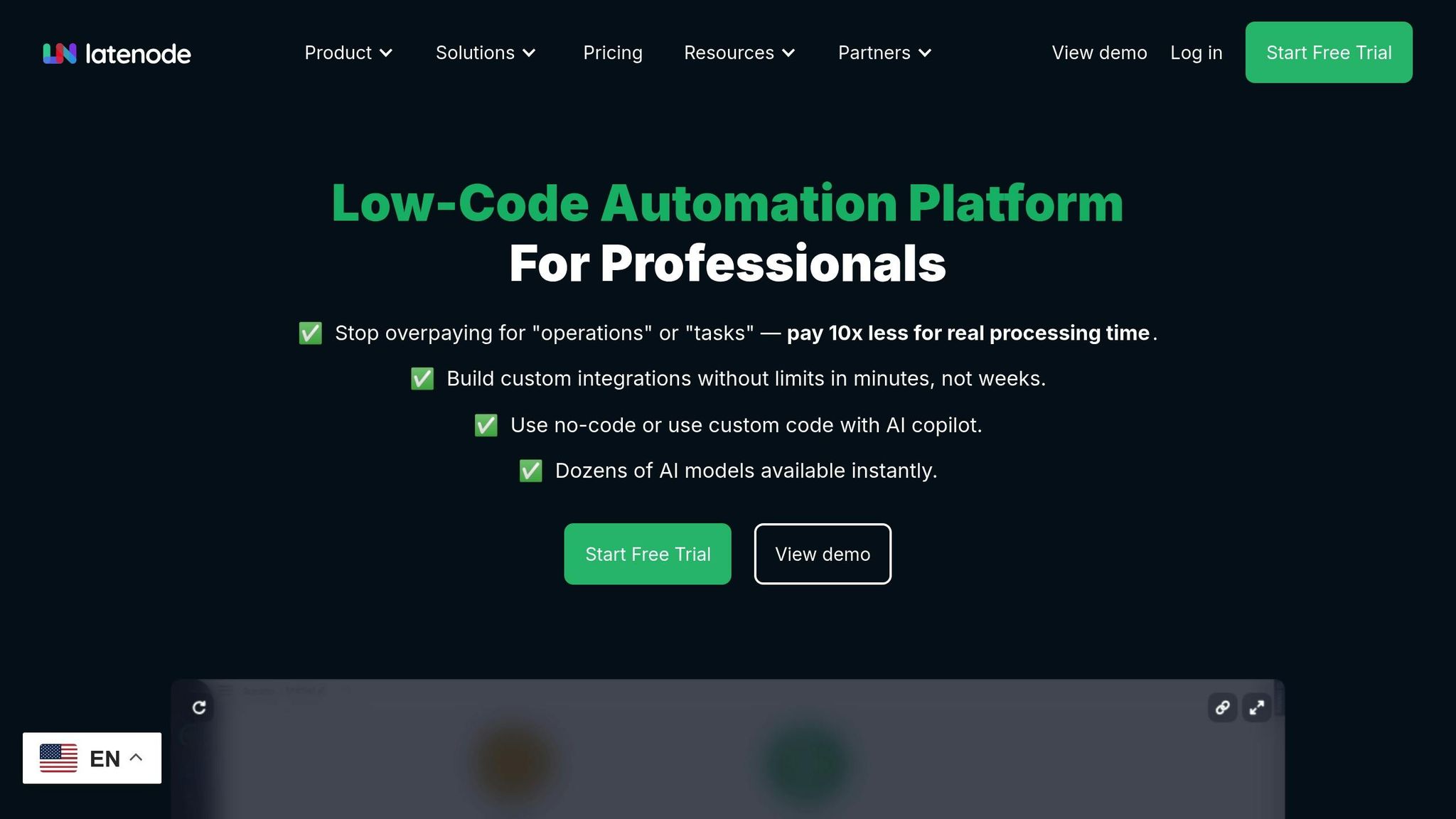


Which AI model is right for your business: Grok or LLaMA? Here’s a quick breakdown:
Quick Comparison:
| Feature | Grok | LLaMA |
|---|---|---|
| Model Size | 314B parameters | 7B–400B (varies by version) |
| Context Length | 128,000 tokens | Up to 2,048 tokens |
| Cost (Input) | $5 per million tokens | $0.35 per million tokens |
| Best For | Complex queries, coding | Scalable automation, multimodal tasks |
If you need speed and advanced problem-solving, choose Grok. For cost-effective, scalable solutions, go with LLaMA. Dive into the article for a detailed comparison.
Grok and LLaMA bring distinct strengths to the table, each tailored to specific needs in business automation and data processing. Let’s dive into their key features and technical details.

Grok 3 takes AI-driven code generation and mathematical problem-solving to the next level. With 2.7 trillion parameters trained on 12.8 trillion tokens [4], it delivers impressive results. Its "Big Brain" mode enhances computational power for handling complex tasks [4]. Grok 3 has achieved 86.5% on the HumanEval benchmark [4] and 79.4% on LiveCodeBench, showcasing its strength in both code generation and problem-solving [5].
Performance highlights include:
These features make Grok 3 a strong choice for businesses looking to optimize workflow automation.
While Grok excels in text-heavy tasks, LLaMA expands its functionality to include multimodal processing. The latest LLaMA 3.2 integrates text and image capabilities [6], enabling businesses to:
For example, here’s how you can use LLaMa for automation in Latenode:
Let AI handle emails while you focus on real work.
[New email] + [LLaMa] + [Send Email]
Use case: Auto-reply to incoming emails with a polite thank-you and quick response.
[New task in Todoist] + [LLaMa]
You write “Prepare presentation” — LLaMa tells you where to start.
Use case: Generate step-by-step plans for any new task.
[Notion page updated] + [LLaMa] + [Slack]
No more manual summaries — let the model do the thinking for you.
Use case: Summarize updated Notion pages or extract main ideas and send them to your Slack.
LLaMA 3.2 also offers lightweight versions (1B and 3B) for on-device deployment, ideal for quick text processing and automated task management. These versions include tool-calling features to integrate smoothly with existing systems [7].
For more advanced needs, the vision-enabled models (11B and 90B) excel in image recognition and reasoning, outperforming competitors such as Claude 3 Haiku [7]. This multimodal capability is particularly useful for analyzing business documents and ensuring seamless data integration.
Performance tests highlight clear differences in efficiency. Grok 3 stands out with a 67ms response latency, allowing for near-instant task processing. It completes tasks 25% faster than competitors like ChatGPT o1 pro and DeepSeek R1 [4]. With a computing power of 1.5 petaflops, its transformer-reinforcement design ensures exceptional performance:
| Model | Generation Speed (Approx., t/s) |
| Llama 3.2 70B | ~45 t/s (avg API) |
| DeepSeek V3 | ~25-60 t/s (API/Claimed) |
| Grok 3 | ~50-60 t/s (Beta/Observed), |
| ChatGPT 4o | ~35 - 110+ t/s (API/Observed) |
These figures highlight Grok 3's ability to handle demanding tasks efficiently, making it a strong choice for real-time applications.
Cost-effectiveness is just as important as speed. When it comes to processing tokens, LLaMA 3.2 90B Vision Instruct offers a much lower cost - 26.7 times cheaper per million tokens:
| Cost Type | Grok-2 | LLaMA 3.2 90B Vision |
|---|---|---|
| Input (per million tokens) | $5.00 | $0.35 |
| Output (per million tokens) | $15.00 | $0.40 |
Subscription models also play a role in determining overall costs. Grok 3 is available for free, but it’s limited. To access the higher limits, you need an X's Premium+ subscription for $30 per month [8]. Additionally, a separate SuperGrok plan is set to launch, priced also at $30 monthly. These options provide flexibility for users with varying needs and budgets.
Meanwhile, all of these models (except for Grok 3, which doesn’t have an official API) are available on Latenode as direct, plug-and-play integrations. No need to mess with API tokens, account credentials, or code setups — Latenode has it covered. Connect ChatGPT, LLaMa, and DeepSeek to your favorite services to streamline your workflow with no-code automation!
 Latenode's workflow builder makes it easy to integrate Grok and LLaMA for streamlined automation. Its visual canvas allows you to design workflows with features like:
Latenode's workflow builder makes it easy to integrate Grok and LLaMA for streamlined automation. Its visual canvas allows you to design workflows with features like:
| Feature | What It Does | How It Works |
|---|---|---|
| No-code Nodes | Simplifies setup | Drag-and-drop interface |
| Custom Code | Enables advanced integration | AI-assisted API configuration |
| Branching Logic | Handles complex conditions | Build decision-making workflows |
| Sub-scenarios | Breaks down processes | Modular workflow design |
"AI Nodes are amazing. You can use it without having API keys, it uses Latenode credit to call the AI models which makes it super easy to use. Latenode custom GPT is very helpful especially with node configuration." - Islam B., CEO Computer Software [9]
Practical examples show how these tools deliver real results.
Here are some ways businesses have used Latenode with Grok or LLaMA to achieve measurable improvements:
Chatbot Automation
LLaMA 3.1 powers chatbots that handle patient admin tasks and support multiple languages. Using Meta's grouped query attention optimization, it processes responses quickly, ensuring fast answers to patient queries [3].
Why not leverage powerful AI tools to answer customer inquiries? Such a chatbot records conversations in databases, so it never loses the context of ongoing discussions. Best of all, you can build your very own chatbot right away using our built-in AI template.
Automated Web Searching
Latenode enhances your data analysis routine by using Headless Browser feature to scrape internet data monitor sites, and make screenshots. This enables it to provide concise, accurate insights about your competitors, favorite websites, or anything else you can imagine. Here’s our template for screenshot-based website analysis on Latenode:
Invoice Management Simplified
Companies use AI models to automate invoice management, and Grok will not be exception. Latenode can help store data, process it, and report wherever needed. It improves supply chain efficiency, while AI further refines the process. Check out how you can automate invoice processing with our AI:
"What I liked most about Latenode compared to the competition is that I did have the ability to write code and create custom nodes. Most other platforms are strictly no-code, which for me really limited what I could create." - Germaine H., Founder Information Technology [9]
Latenode users report up to 90x lower costs compared to other platforms, making it a cost-effective choice. Plus, with access to over 300 integrations, Javascript, and custom nodes, it’s a powerful solution for businesses looking to incorporate Grok or LLaMA into their systems.
Here's a quick look at how Grok and LLaMA stack up in key areas of their technical specifications.
Large language models are advancing quickly, and this table highlights some of the most important features:
| Feature | Grok | LLaMA |
|---|---|---|
| Model Size | 314B parameters | Multiple options: 7B, 13B, 33B, 65B (Llama 2) 8B, 70B, 400B (Llama 3) |
| Context Length | 128,000 tokens | 128,000 tokens (LLaMa 3.2 90B) |
| Licensing | Apache 2.0 (Open Source) | Llama 2: Noncommercial license Llama 3: Custom license allowing commercial use for <700M monthly active users[11] |
| Integration Support | Not specified | Direct integration in Latenode with "llama-2-7b-chat-int8"; supports 2,048 input tokens and 1,800 output tokens, making it suitable for conversational tasks |
| Quantization | Not specified | Int8 quantization available for faster processing[12] |
Grok made its open-source debut in March 2024[11][2], emphasizing accessibility for developers. On the other hand, LLaMA's progression from Llama 2 to Llama 3 highlights Meta's focus on offering scalable and flexible solutions.
Which model works best? It depends on your needs. Grok's massive parameter size might be better for complex applications, while LLaMA's variety of model sizes gives you options based on your hardware and performance goals.
This guide provides practical recommendations tailored to different business sizes and needs. While Grok and LLaMA are designed for separate purposes, each offers distinct advantages: Grok is ideal for handling detailed and complex queries, while LLaMA focuses on scalable and integrated automation.
| Business Type | Recommended Model | Advantages |
|---|---|---|
| Startups & Small Teams | LLaMA (7B or 13B) | • Budget-friendly with Llama 2's free commercial license • Requires less computing power • Perfect for basic automation tasks |
| Mid-sized Companies | LLaMA (33B or 70B) | • Seamless integration with Meta platforms • Handles large conversation volumes • Ensures consistent branding across channels |
| Enterprise & Tech Companies | Grok (314B) | • Excels at managing complex queries • Offers extensive customization options • Advanced capabilities for generating code |
These recommendations are based on the technical and cost analyses covered earlier.
Here are some key factors to keep in mind:
Whether you just need a good system for chatting and learning, or you need to automate your workflow on Latenode with AI — Your choice should align with your business goals and operational priorities. Need advice? Chat with a Latenode expert on our forum!



